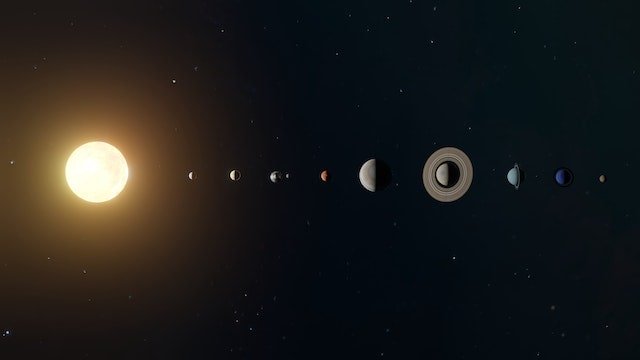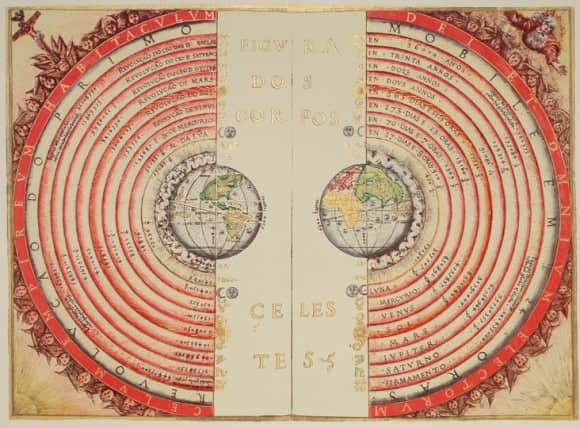Physical Address
304 North Cardinal St.
Dorchester Center, MA 02124
Physical Address
304 North Cardinal St.
Dorchester Center, MA 02124

Our home planet is billions of years old and from when the earliest civilizations were curious to understand the position of Earth and other celestial objects in the solar system, theories have been developed.
The Greeks were the first to develop a theory on how the Earth and other planets in the solar system rotate.
The geocentric theory describes a system where the Earth is the centre of the solar system, with other planets and celestial objects revolving around it.
The Heliocentric theory on the other hand is an astronomical model that places the Sun at the centre of the universe, with Earth and other planets orbiting it.
Stay with us as we will be discussing the difference between Heliocentrism vs Geocentrism.

The Heliocentric model describes a system in which the Sun is in the centre of the universe, with the Earth and other planets revolving around it. The heliocentric model was opposed to geocentrism.
Geocentrism or the geocentric model placed the Earth at the centre of the Solar system, with the Sun and other planets revolving around it. The idea that the Earth revolves around the Sun was proposed by Aristarchus of Samos in the third century BC.
Aristarchus was convinced that the Earth revolves around the Sun after Philolaus of Croton presented a concept. Hictas and Philolaus were the two ancient Greek philosophers who believed that the Earth was spherical and revolved around a mystical central fire.
They both believed that the mystical central fire regulated the universe.
Aristarchus’ heliocentric model drew attention since there was no scientific work done during the Hellenistic period.
However, a mathematical model of a heliocentric system was presented during the Renaissance era by Catholic cleric and mathematician, Nicolaus Copernicus.
More advanced theories were presented in the following century. Galileo Galilei presented his supporting observations using a telescope and Johannes Kepler also introduced elliptical orbit.
The heliocentric and geocentric model presents inaccurate theories relating to how the Sun, Earth, and other celestial objects are in space. From observations made by William Herschel and Friedrich Bessel alongside other astronomers, it was realized that the star (Sun) in our solar system was not at the centre of the universe.
Also Read: Hill vs Mountain: Difference vs Comparison
Copernican heliocentrism is an astronomical concept published by Renaissance mathematician and Catholic cleric, Nicolaus Copernicus. This astronomical concept places the Sun at the centre of the universe, with Earth and other planets revolving around it.
The Copernican model supersedes Ptolemy’s geocentric concept- which places the Earth at the centre of the universe.
Nicolaus Copernicus had communicated an outline of the heliocentric theory to educational institutions before 1514. However, Copernicus decided not to publish his heliocentric theory for a reason, until it was pressed by Rheticus.
Nicolaus Copernicus’ idea was to propose an alternative, a practical one to the Ptolemaic model. His objectives were to measure the length of the solar year accurately.
The Earth is a planet in the solar system revolving around the Sun in a specific order. From Copernicus’ observations, the Earth moves in three directions which are daily rotation, annual rotation, and annual axis tilting.
The distance between the Sun and the Earth is huge but compared to the distance between the Sun and other stars, fitting all the planets in the solar system between the Sun and the Earth is a very small distance.

Also Read: Hypothesis vs Prediction: Differences and Comparison
The geocentric model or geocentrism describes a cosmological theory of the universe with the Earth at the central position. Geocentrism describes a system in which the Sun, moon, stars and other planets orbit the Earth.
The geocentric model was the popular description of the universe that was accepted in several ancient civilizations.
Two observations were made to support the theory that the Earth was at the central position of the universe with other planets, stars, and moons revolving around it.
The first observation is that the Sun always appears to revolve around the Earth once a day. The moon and other planets in the solar system also appear to revolve around the Earth once every 24 hours.
The observable stars in the night sky appear to be fixed on a celestial sphere and they rotate once every 24 hours about an axis via the Earth’s geographical poles.
The second observation is that the Earth appears to be still from the perspective of a stationary observer.
The Ptolemaic system was developed in the 2nd century AD by Hellenistic astronomer, mathematician, and astrologer Claudius Ptolemaeus.
Claudius Ptolemaeus formulated an accurate system of predicting where every known planet is located.
For over a millennia, both Islamic and European astronomers assumed that Ptolemaeus’s work, the Almagest was the accurate cosmological model. The Ptolemaic system is sometimes mistaken to be identical to the geocentric model.
Ptolemy himself disagreed with the notion that the Earth was a sphere in the centre of the universe. This was because of the observation in which half of the stars were below the horizon and the other half was above the horizon.
Heliocentrism vs Geocentrism: Difference between the Heliocentric and Geocentric Model
The Copernican model supersedes Ptolemy’s geocentric concept- which places the Earth at the centre of the universe.
The heliocentric and geocentric models were the earliest theories to describe planetary motion and their position in the universe.
The main difference between heliocentric and geocentric models is that one model suggests that the Earth is in the centre of the universe with other planets revolving around it, whereas the other model describes a system in which the Sun is at the centre of the universe with planets revolving around it.
Also Read: Mexico vs Puerto Rico: Difference and Comparison
| Heliocentric | Geocentric | |
| Meaning | The Heliocentric model describes a system in which the Sun is in the centre of the universe, with the Earth and other planets revolving around it. | Geocentric model or geocentrism describes a cosmological theory of the universe with the Earth at the central position. |
| Earth | Earth is not stationary | Earth is stationary |
| Major difference | In the heliocentric model, the Sun is in the centre of the universe, with the Earth and other planets revolving around it. | In the geocentric model, the Earth is at the centre of the universe with the other planets and the Sun revolving around it. |
Here are a few frequently asked questions about the difference between Heliocentrism vs Geocentrism.
The geocentric theory is considered a failed hypothesis which states that the Earth is in the central position of the universe with all celestial objects orbiting it. The Greek geocentric model supports the concept of the universe being finite. It also suggests that the furthest entity from Earth was heaven.
Also Read: Mexican vs Puerto Rican: Difference and Comparison
The earliest writings relating to the geocentric model have been attributed to ancient Greek Philosophers such as Plato, Aristotle, and Anaximander.
The geocentric model of the universe is important for the purpose of understanding how early civilizations imagined the universe.
The Heliocentric model describes a system in which the Sun is in the centre of the universe, with the Earth and other planets revolving around it. Geocentrism or the geocentric model placed the Earth at the centre of the Solar system, with the Sun and other planets revolving around it
The Copernican model supersedes Ptolemy’s geocentric concept- which places the Earth at the centre of the universe. The heliocentric and geocentric models were the earliest theories to describe planetary motion and their position in the universe.